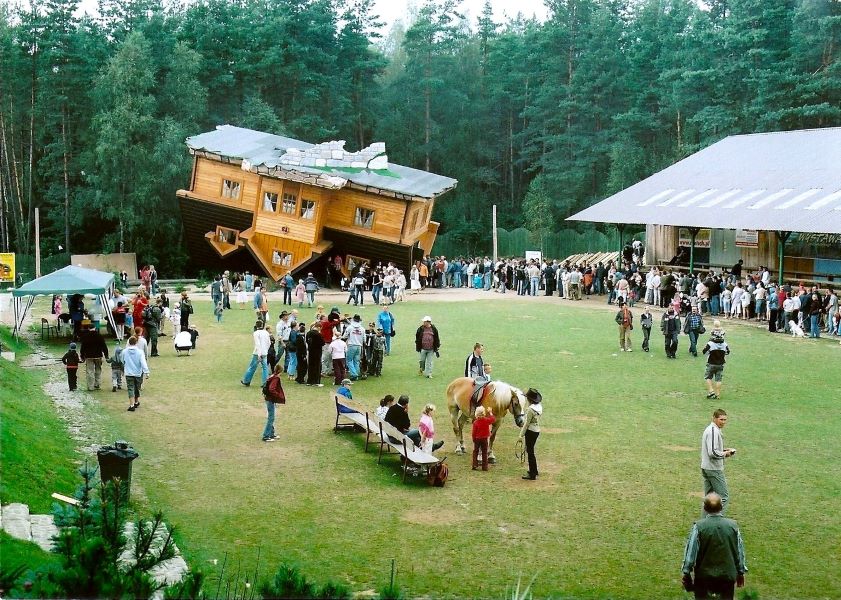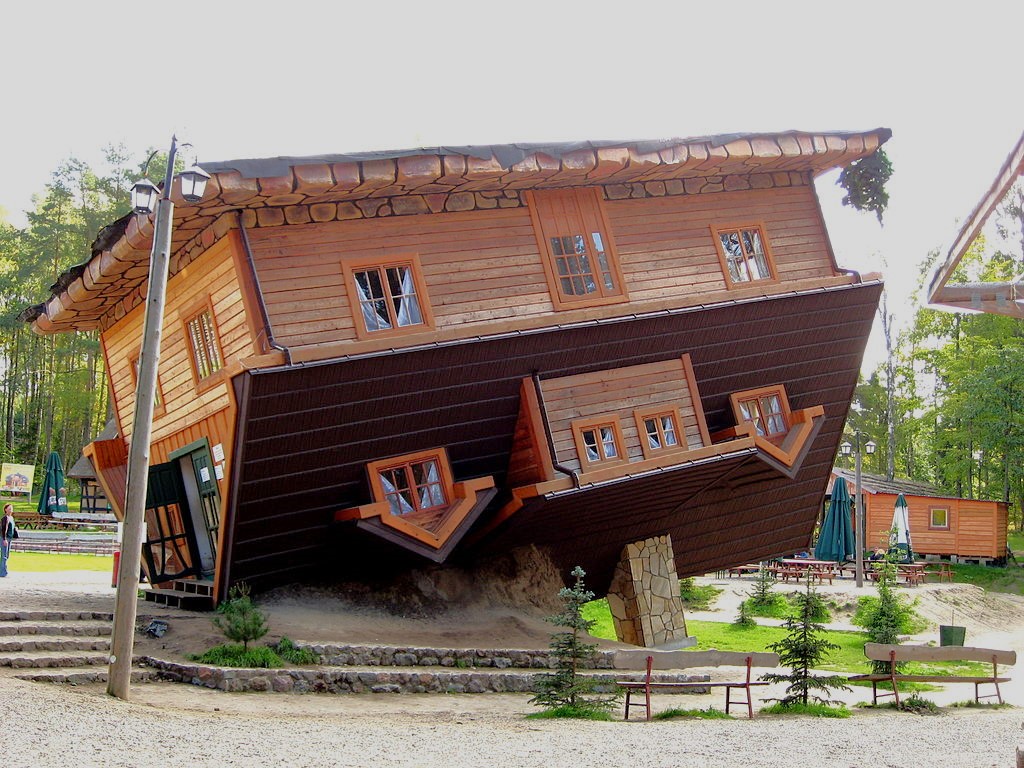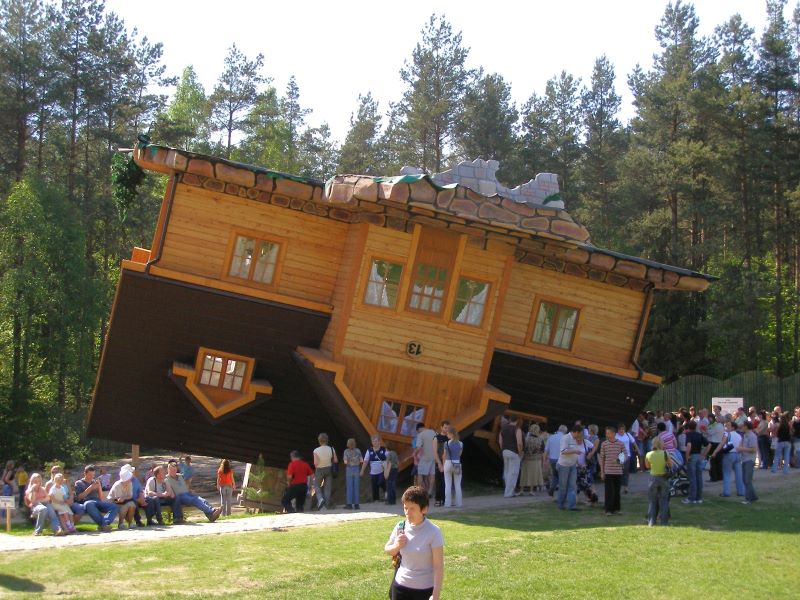Located in the small village of Szymbark, in northern Poland’s Kashubian region, the Upside Down House is one of the country’s most unusual attractions. Designed by the Polish businessman and philanthropist Daniel Czapiewski, the house was built in 2007 as a social and political commentary. Its inverted structure symbolizes the confusion and upheaval experienced in Poland during the Communist era and the chaotic transition to democracy. While the house itself may seem whimsical or eccentric, it carries deeper meaning, reflecting the disorienting feeling many felt during times of political and social instability.

Ok, who flipped the house? by Ken Gordon licensed under CC BY-ND 2.0
The house’s design is straightforward but surreal: the roof sits on the ground, and the floor points skyward, making it seem as if the entire building was flipped by some unseen force. This inversion extends inside as well, with furniture, paintings, and other household items arranged on the ceilings. The house appears as though it was once a traditional wooden structure, but it gives off the sense that gravity has been completely defied. Visitors entering through the windows rather than a door only adds to this disorienting effect.
The Upside Down House is part of the larger Centre for Education and Regional Promotion in Szymbark, Poland, an area dedicated to preserving and promoting Kashubian culture and history. It’s located roughly an hour’s drive from the city of Gdańsk, which is a popular starting point for many tourists who make their way to Szymbark. Once in Gdańsk, you can rent a car or use public transport to reach the village. Buses from Gdańsk to Szymbark run regularly, although for flexibility and time efficiency, renting a car may be the better option.

Upside-Down House, Poland by Tomasz Sienicki licensed under CC BY 3.0
Arriving in Szymbark, visitors can expect an immersive experience even before stepping inside the house. From the outside, the house appears askew, with its slanted foundation and tilted stance, giving the impression that it might tip over at any moment. Once you’re inside, however, the experience intensifies. The entire interior is built upside down, and the slant of the house further disorients visitors, making even walking difficult. Many people report feeling dizzy or light-headed due to the unusual perspective and the challenge of navigating the space.
For most, the visit lasts about 30 minutes to an hour, depending on how long they want to explore or take pictures. As part of a larger cultural site, visitors often spend additional time at the educational exhibits surrounding the Upside Down House, including learning about Kashubian history and traditions, woodcarving, and regional food tastings.
You Might Also Enjoy: Offbeat Travel: The Eye of the Earth in Cetina, Croatia

Dom postawiony na głowie by magro_kr licensed under BY-NC-ND 2.0
What makes the Upside Down House stand out isn’t just its bizarre structure, but its capacity to make people think about perspective—both literally and metaphorically. It’s a reflection of how easily our sense of balance and normalcy can be disrupted, whether by architecture or by historical events. The playful yet thought-provoking design draws visitors from across the globe, curious to experience firsthand what it’s like to walk on ceilings and see the world, quite literally, turned upside down.
Have you ever visited the Upside-Down House? Tell us about it in the comments below!


Leave a Reply